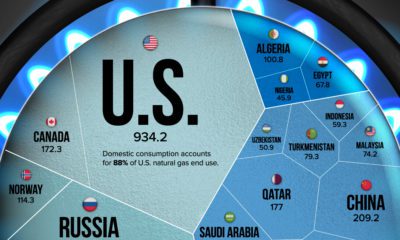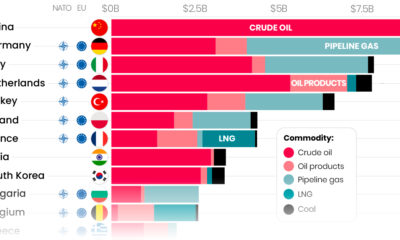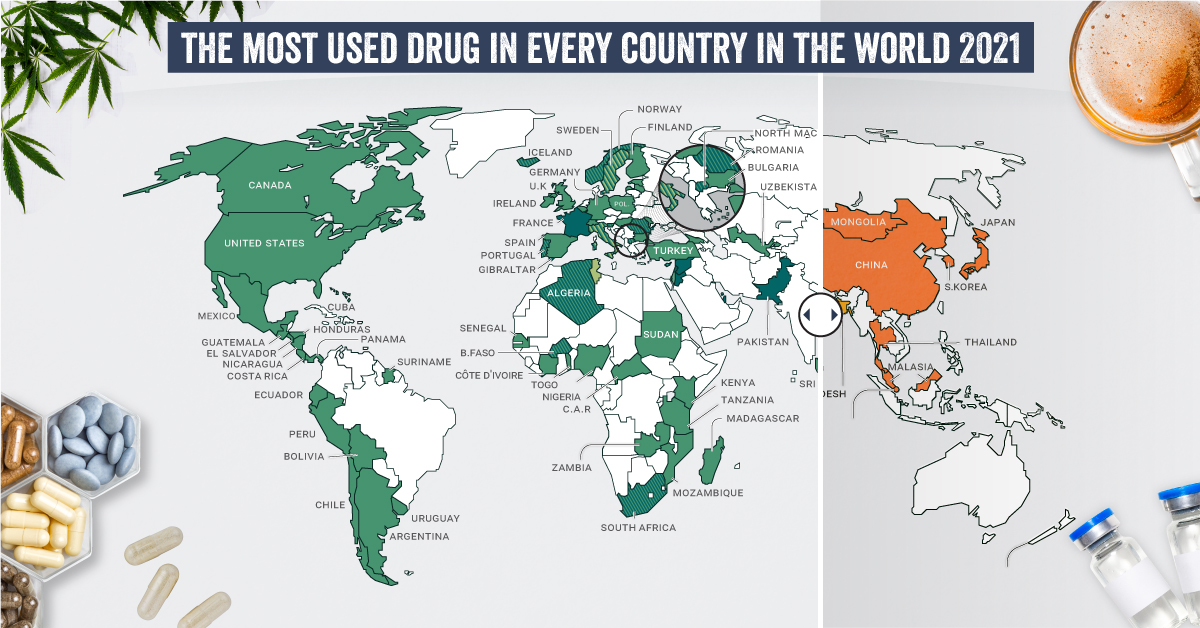Not only have CBD consumer products rapidly infiltrated a long list of industries, new research discoveries continue to prove their therapeutic benefits. By 2023, the European CBD market is estimated to reach €1.4 billion. However, a big problem remains—there is an incredible amount of uncertainty surrounding what is legal, and what isn’t. The above infographic from Elements of Green sheds some light on the innately complex legal status of CBD products in Europe.
The Great CBD Debate
CBD—short for cannabidiol—is a non-psychotropic compound produced by cannabis plants. While most European countries have legalised it in some way, the caveat for many is that it must be extracted from industrial hemp, thus containing less than 0.2% THC—the intoxicating compound also found in cannabis. On the other hand, countries such as France and Norway only permit CBD isolate (the pure form of CBD) with no THC. In 2019, the European Food Safety Authority (EFSA) designated CBD products as a novel food. This means that companies should seek authorisation to bring products to market, although it is not required by law. However, the industry has now hit a fork in the road, as the European Commission (EC) recently announced it will be suspending applications for novel foods status while it determines whether or not certain CBD products should be labelled as narcotics instead.
The Legal Landscape in 2020
As the industry flip flops between regulations, consumers and investors need to understand that each country has its own laws surrounding the use of CBD. While a handful of European countries have made it illegal to import, buy, or possess CBD, the vast majority have legalised CBD products that either comply with the Novel Foods Act, or can be obtained from a licensed medical practitioner. Of these countries, Germany and the UK lead the European CBD market, followed by Switzerland, Austria, Spain, and Greece.
A Call For Change
A progessive stance on cannabis legalisation combined with increasing consumer demand has led to several countries showing remarkable growth, such as Poland, Bulgaria, Netherlands, and Luxembourg. Luxembourg in particular presents a compelling growth story, as it plans to fully legalise adult-use recreational cannabis in 2021, which would make it the first European country to do so. Despite its small size, Luxembourg could in fact be instrumental in encouraging neighbouring countries to implement similar reforms, also known as the neighbour effect.
Growing Pains of a Nascent Industry
Considering each country has its own unique restrictions in place, CBD consumers should educate themselves on the regulations and laws relevant to them. Despite these often confusing laws and restrictions, it is clear that demand for CBD products is growing exponentially. As a result, the continent may have the potential to overtake North America as the largest CBD market in the world. on Humans have a storied and complicated relationship with drugs. Defined as chemical substances that cause a change in our physiology or psychology, many drugs are taken medicinally or accepted culturally, like caffeine, nicotine, and alcohol. But many drugs—including medicines and non-medicinal substances taken as drugs—are taken recreationally and can be abused. Each country and people have their own relationship to drugs, with some embracing the use of specific substances while others shun them outright. What are the most common drugs that are considered generally illicit in different parts of the world? Today’s graphics use data from the UN’s World Drug Report 2021 to highlight the most prevalent drug used in each country.
What Types of Common Drugs Are Tracked?
The World Drug Report looks explicitly at the supply and demand of the international illegal drug market, not including commonly legal substances like caffeine and alcohol. Drugs are grouped by class and type, with six main types of drugs found as the most prevalent drugs worldwide.
Cannabis*: Drugs derived from cannabis, including hemp. This category includes marijuana (dried flowers), hashish (resin), and other for various other parts of the plant or derived oils. Cocaine: Drugs derived from the leaves of coca plants. Labeled as either cocaine salts for powder form or crack for cocaine processed with baking soda and water into rock form. Opioids: Includes opiates which are derived directly from the opium poppy plant, including morphine, codeine, and heroin, as well as synthetic alkaloids. Amphetamine-type Stimulants (ATS): Amphetamine and drugs derived from amphetamine, including meth (also known as speed), MDMA, and ecstasy. Sedatives and Tranquilizers: Includes other drugs whose main purpose is to reduce energy, excitement, or anxiety, as well as drugs used primarily to initiate or help with sleep (also called hypnotics). Solvents and Inhalants: Gases or chemicals that can cause intoxication but are not intended to be drugs, including fuels, glues, and other industrial substances.
The report also tracked the prevalence of hallucinogens—psychoactive drugs which strongly affect the mind and cause a “trip”—but no hallucinogens ranked as the most prevalent drug in any one country. *Editor’s note: Recreational cannabis is legal in five countries, and some non-federal jurisdictions (i.e. states). However, in the context of this report, it was included because it is still widely illicit in most countries globally.
The Most Prevalent Drug in Each Country
According to the report, 275 million people used drugs worldwide in 2020. Between the ages of 15–64, around 5.5% of the global population used drugs at least once. Many countries grouped different types of the same drug class together, and a few like Saudi Arabia and North Macedonia had multiple different drug types listed as the most prevalent. But across the board, cannabis was the most commonly prevalent drug used in 107 listed countries and territories: How prevalent is cannabis worldwide? 72 locations or more than two-thirds of those reporting listed cannabis as the most prevalent drug. Unsurprisingly these include countries that have legalized recreational cannabis: Canada, Georgia, Mexico, South Africa, and Uruguay.
How Common Are Opioids and Other Drugs?
Though the global prevalence of cannabis is unsurprising, especially as it becomes legalized and accepted in more countries, other drugs also have strong footholds. Opioids (14 locations) were the most prevalent drugs in the Middle-East, South and Central Asia, including in India and Iran. Notably, Afghanistan is the world’s largest producer of opium, supplying more than 90% of illicit heroin globally. Amphetamine-type drugs (9 locations) were the third-most common drugs overall, mainly in East Asia. Methamphetamine was the reported most prevalent drug in China, South Korea, and Japan, while amphetamine was only the most common drug in Bangladesh. However, it’s important to note that illicit drug usage is tough to track. Asian countries where cannabis is less frequently found (or reported) might understate its usage. At the same time, the opioid epidemic in the U.S. and Canada reflects high opioid usage in the West. As some drugs become more widespread and others face a renewed “war,” the landscape is certain to shift over the next few years.












